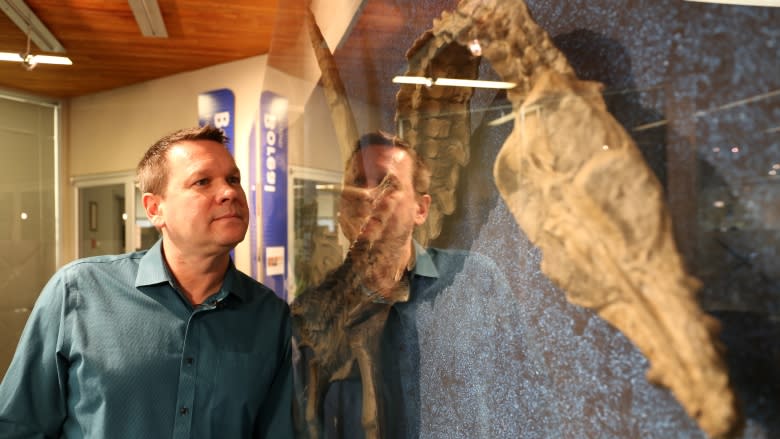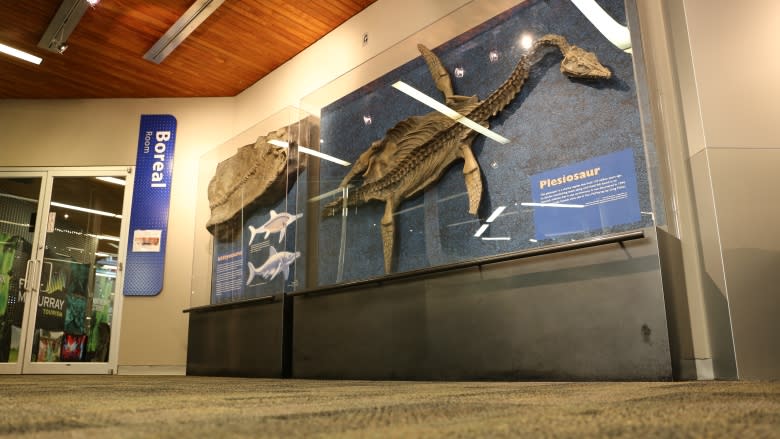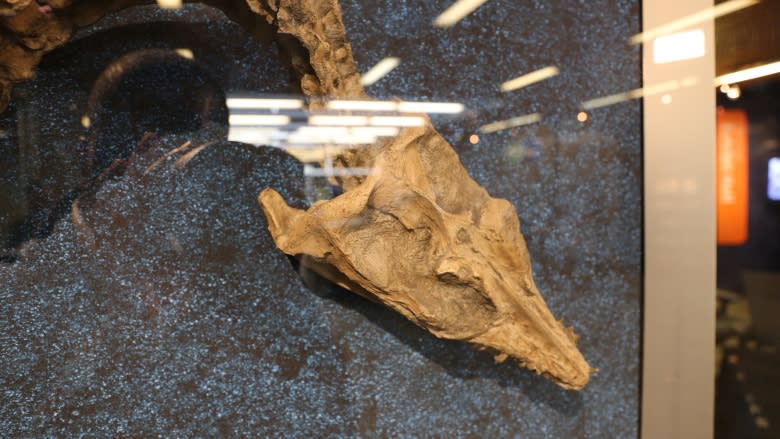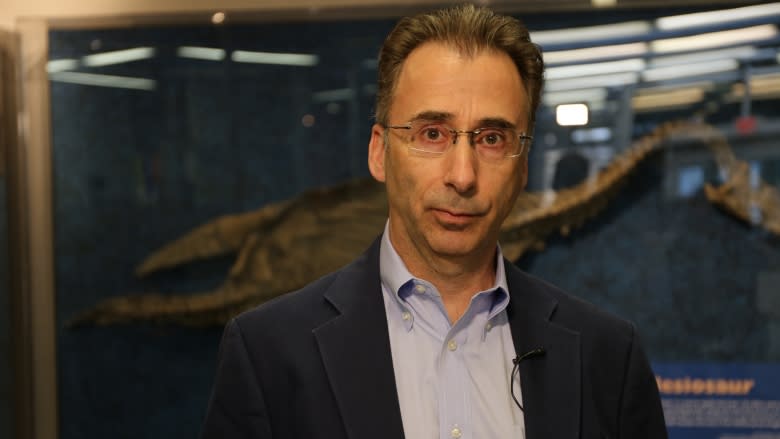Syncrude marks 25 years of fossil finds in Fort McMurray oilsands mines
Greg Fisher was working the night shift as a hydraulic shovel operator in a Syncrude mine when under the beam of his machine's bright lights he saw one of the rarest dinosaur fossils ever discovered in North America.
"You can see the segments in it. So you knew it was bone," Fisher said Wednesday. "I called the supervisor and let him know what I was seeing."
It was a plesiosaur; a carnivorous marine reptile that lived 110 million years ago.
The Royal Tyrrell Museum later confirmed that Fisher had discovered the oldest and most complete cretaceous plesiosaur specimen ever found in North America.
The find was made 38 metres underground in 1994, Fisher said.
Syncrude discovered its first fossil on April 1, 1992 and has counted 10 such finds in the 25 years since. The Athabasca oilsands area was an interior sea more than 100 million years ago.
Fisher spoke Wednesday at a media event to mark the 25th anniversary of the 1992 find.
Greg Fuhr, Syncrude's vice president of mining and extraction, said prehistoric rivers deposited dead animals and plants in the area, which decomposed and formed the oilsands.
"So, within that, obviously there's a rich history of fossils and a history to tell us about the dinosaurs," Fuhr said.
"They are not as easy to find as some people think," Fisher said. "It's quite rare and you need the perfect environment to preserve these things properly."
A replica of Fisher's plesiosaur is on display at Fort McMurray's Oil Sands Discovery Centre.
The real fossil will be on display at the Royal Tyrrell Museum's "Grounds for Discovery" exhibit opening in May.
Follow David Thurton, CBC's Fort McMurray correspondent, on Facebook, Twitter or contact him via email.





